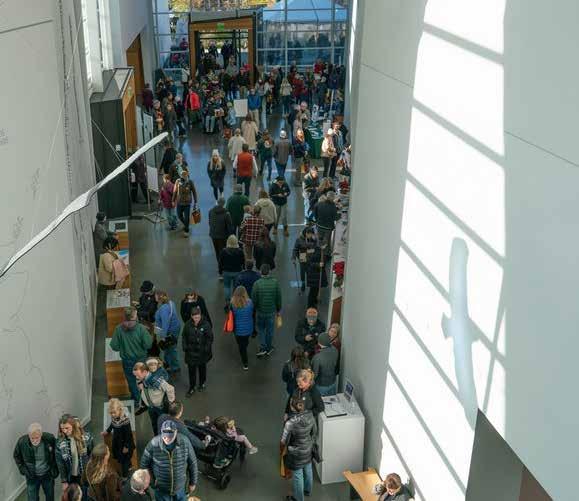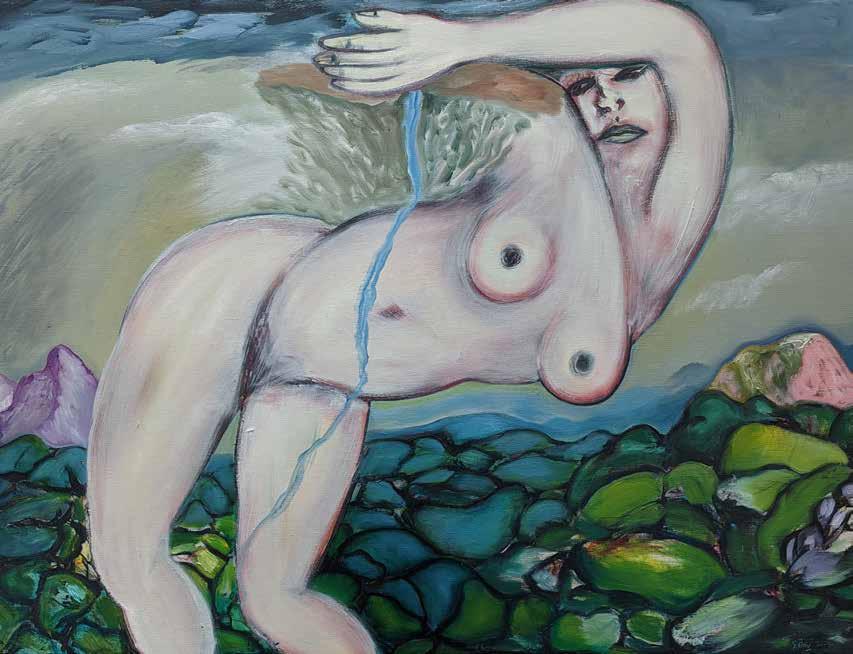
4 minute read
BLACK SUN
A Ballet About Life And Death
By Søren Solkær
Advertisement
IT WAS A LATE FEBRUARY EVENING IN 2020, AND I WAS STANDING IN THE MARSHLANDS OF FRIESLAND, A NORTHERN PROVINCE IN THE NETHERLANDS. Above my head, hundreds of thousands of starlings were swirling, swooping, and diving in a dramatic fashion, blackening the sky. The sound of their wings reverberated through the air, creating wind patterns on the surface of the still water. The transfixing scene was the climax of three years I’d spent following European starlings along their migration routes across the continent. My only companion that night was a stranger who’d also stopped to watch the birds—an older woman who bore witness to the incredible spectacle for close to half an hour.

After the birds had settled into the large reed beds, she turned to me with tears in her eyes. “That was the most beautiful thing I have ever seen in my entire life,” she said. I had to agree with her.
After a 25-year international career spent photographing many of the world’s most famous musicians and actors such as Paul McCartney, Patti Smith, David Lynch, Pharrell Williams, Adele, Jack White, Björk, and Samuel L. Jackson, I recently returned to the landscape of my childhood in southern Denmark to photograph a visual phenomenon I first witnessed as a ten-yearold boy.

I began by photographing the large starling murmurations that take place in the northern stretches of the Wadden Sea, a coastal wetland environment— the world’s largest unbroken system of intertidal sand and mud flats, according to its UNESCO World Heritage listing— that stretches from the northern coasts of the Netherlands and Germany to the marshlands of southern Denmark.
Here, each spring and autumn, the skies come to life with the swirling displays of hundreds of thousands of starlings—an event known locally as “sort sol,” or “black sun”—as the birds pass through on their seasonal migrations. Later, I started following the birds along their migration paths and thus extended the reach of my photographic investigation to include England, Germany, the Netherlands, Ireland, Spain, and Italy. The past two winters I have spent in Rome, where millions of starlings stay during the winter months. It is well documented that starlings were present in great numbers in ancient Rome as they swarmed in massive flocks cascading and folding in awe-inspiring geometric patterns in the sky. Historically the birds hovering over Rome has played an important role in society, as Roman augurs, or diviners, scrutinized these patterns to attempt to decipher the moods of the gods. Divination was crucial for major decision-making as the augurs looked to the skies and “taking the auspices” to see if the gods would give, or withhold, their approval.
In 1890, a wealthy socialite and Shakespeare lover, Eugene Schieffelin released 60 imported starlings from England into New York City's Central Park. Schieffelin supposedly introduced starlings as part of a project to bring to the United States all the birds mentioned in the works of William Shakespeare. Schieffelin belonged to the American Acclimatization Society, a group that aimed to help exchange plants and animals from one part of the world to another. In 1970, there were 200 million starlings in the United States. Today the numbers are dwindling with an estimated number of 85 million.
There is no single definitive explanation for why starlings murmurate, though most scientists theorize that the behavior helps protect the birds from predators (another possible explanation is that murmurations can help the starlings keep warm in the evening by recruiting larger roosts).
Moving in tandem as a single large entity both confuses predators and lowers the risk for each individual bird, a phenomenon called the “dilution effect.” Most of the dramatic performances I witnessed occurred when one or more falcons or hawks were attacking the starling flocks. What’s more difficult to explain, though, is how the birds are able to move in such proximity, with their movements so tightly coordinated. Studies have found that each starling responds to six or seven of its nearest neighbors, a number that seems to optimize the balance between the cohesion of the group and the effort of the individual.
Italian theoretical physicist Giorgio Parisi won the Nobel Prize 2021 for discovering the “interplay of disorder and fluctuations in physical systems from atomic to planetary.”
He states, “The murmuration can be better understood if we study similar systems with phase transition like crystal formation, avalanches, metal becoming magnetized, liquid turning to gases. In each of the above-mentioned system at a particular moment in time, the phase change of a single element affects the whole system within no time. The phenomenon is described as scale-free correlation. In such critical systems, size does not matter. If a single bird changes speed or direction, no matter how small it is, it affects the whole system. We can use this insight to better understand complex systems include things like climate ecosystems, financial systems, and global information networks.”
In creating this series of images, I was inspired by a number of other art forms, including classical landscape painting, calligraphy, and Japanese woodblock prints. I found a Japanese paper mill that produces handmade Washi paper made from juniper fibers. Once I started printing the images on that paper stock everything came together. The organic texture of the paper and the flocks of starlings became one.
I was also inspired by the birds themselves. When starlings move as a single unified organism and assert themselves against the sky, they create a strong visual expression, like that of a calligraphic brush stroke. Lines and shapes emerge within the swarm, bringing to life physical abstractions and calling to mind the patterns formed by interfering waves. The graphic and organic shapes of the starling murmurations range from meditative to highly dramatic as they perform a breath-taking ballet, one with life-and-death consequences. At times, the flock seems to possess the cohesive power of superfluids, changing shape in an endless flux. From geometric to organic, from solid to fluid, from material to ethereal, from reality to a dream: This is the moment I attempt to capture—a mere fragment of eternity.
Søren Solkær: Black Sun will be open from December 10, 2023–March 3, 2024.










